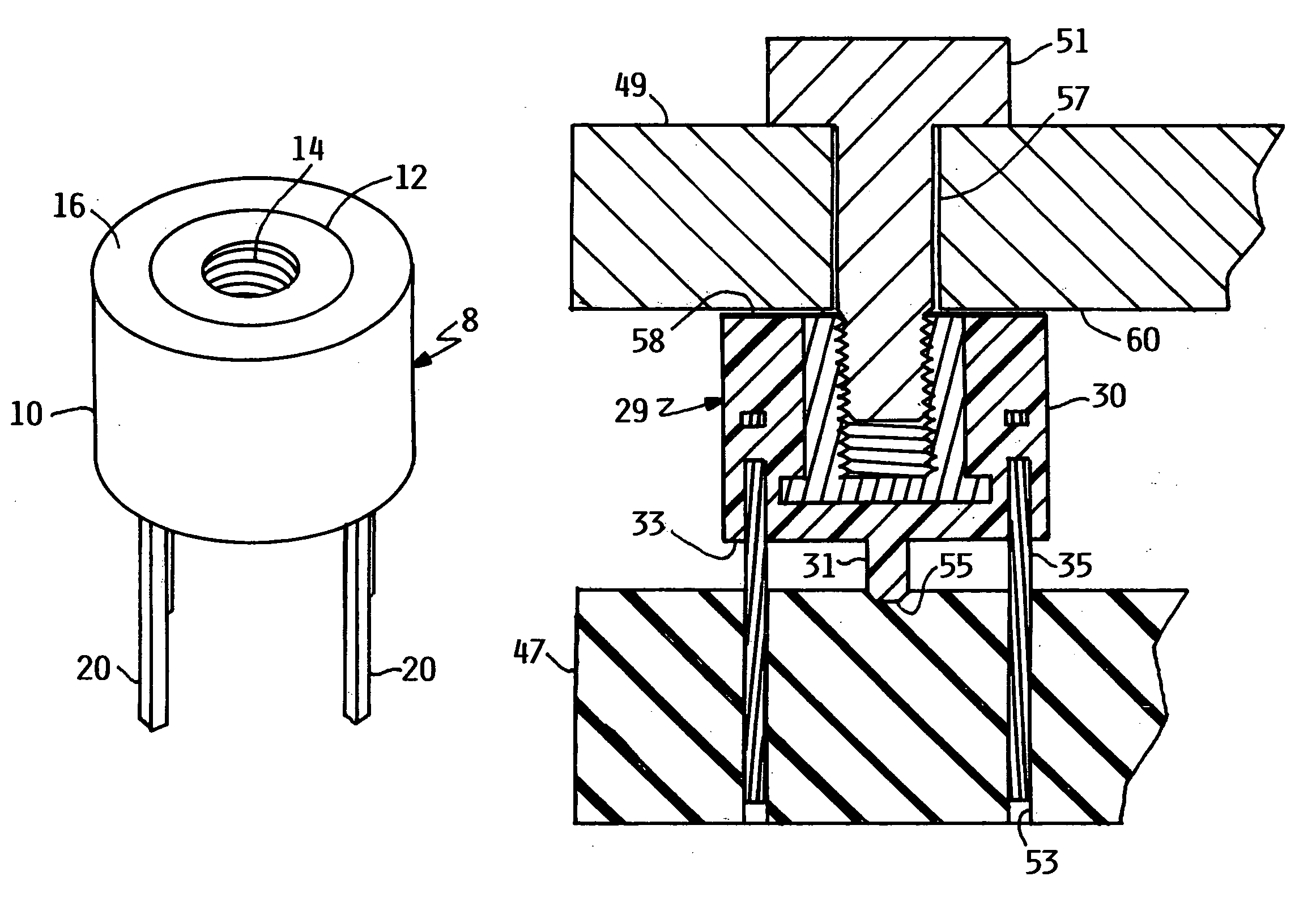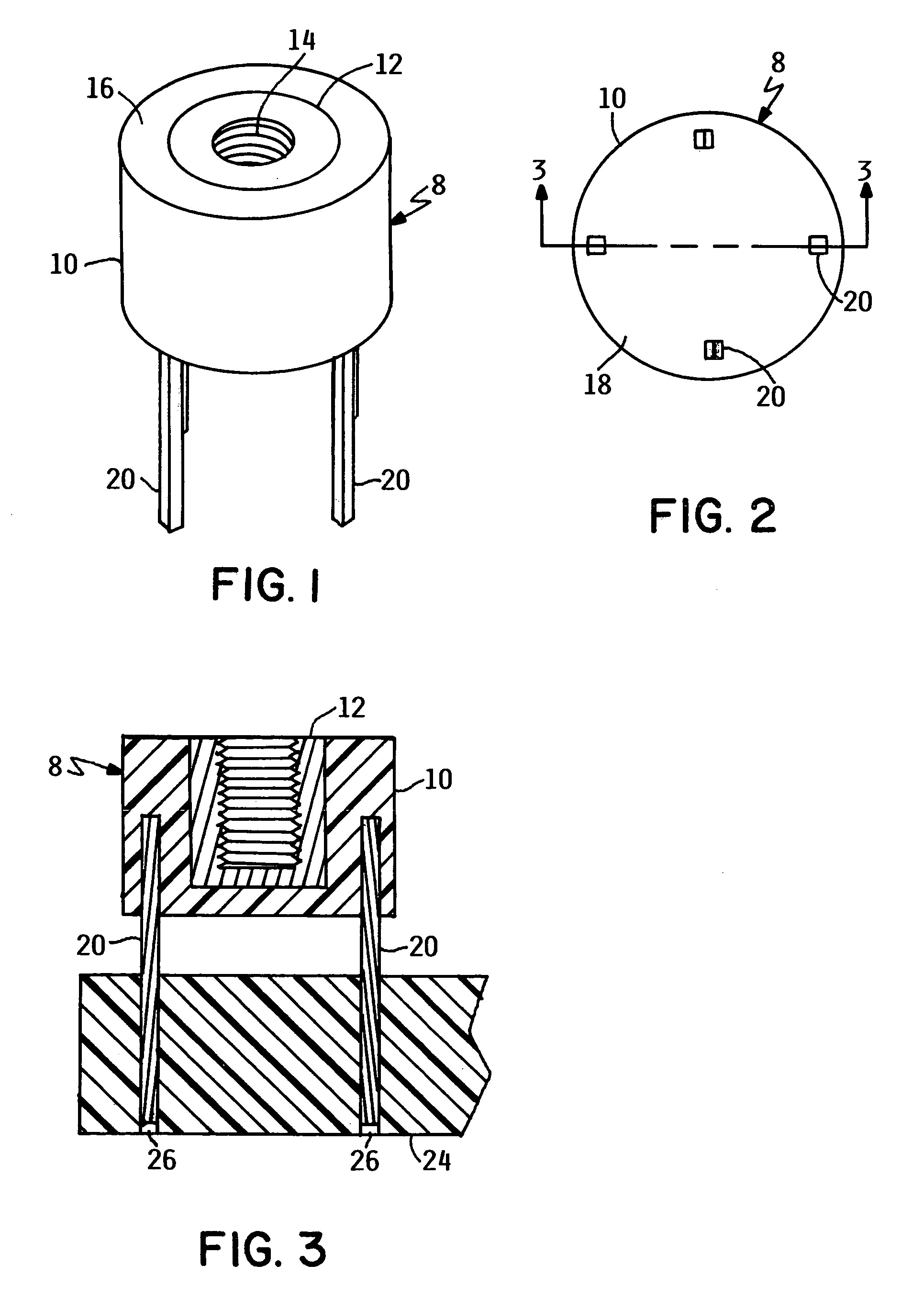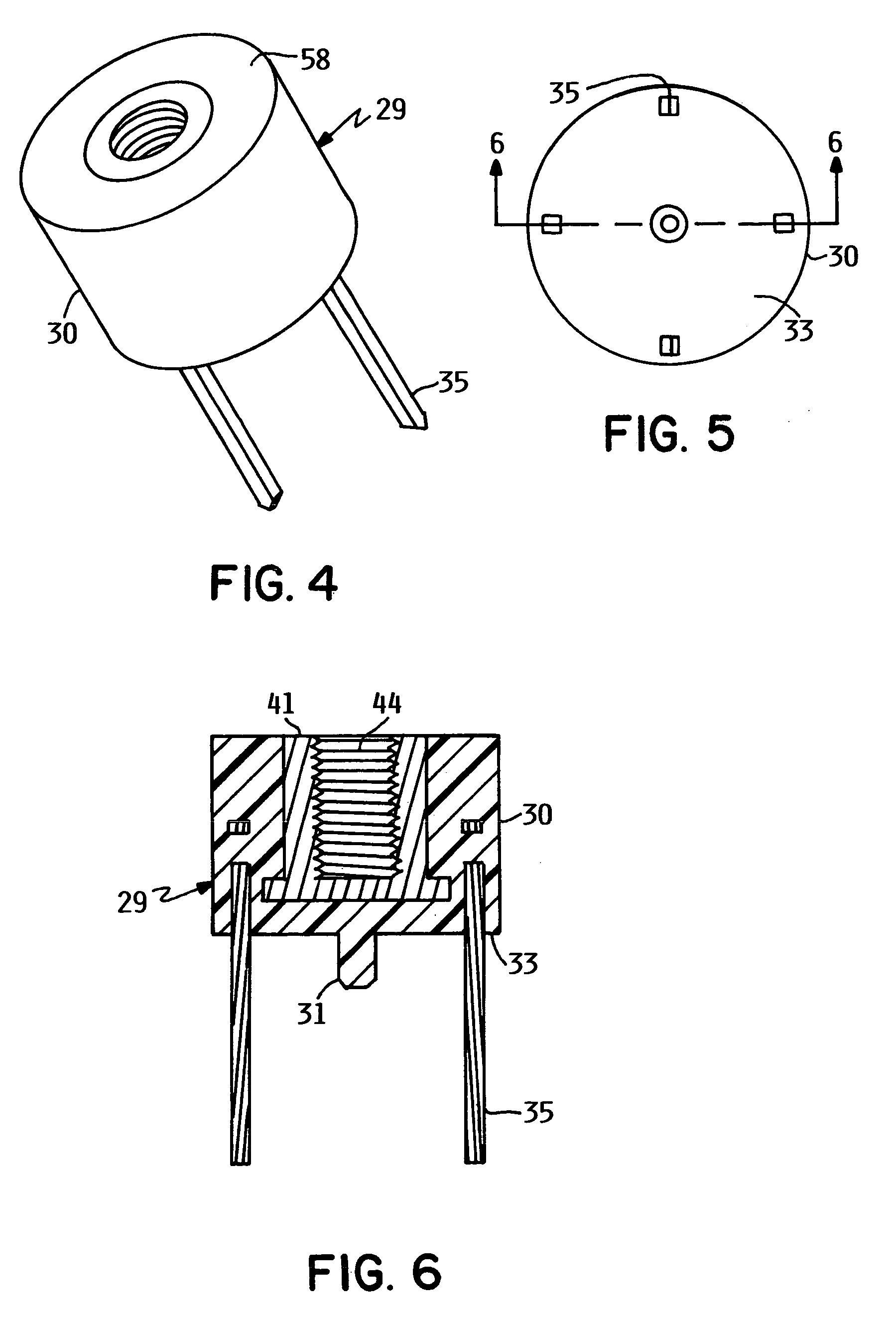Pin mounted circuit board retainer
a circuit board and retainer technology, applied in the direction of fixed connections, electrical apparatus casings/cabinets/drawers, coupling device connections, etc., can solve the problems of power plane shorting, circuit boards to supporting structures are prone to damage, and short wire traces
- Summary
- Abstract
- Description
- Claims
- Application Information
AI Technical Summary
Benefits of technology
Problems solved by technology
Method used
Image
Examples
Embodiment Construction
FIG. 1 is an isometric view illustrating the printed circuit board connector 8 of the present invention. FIG. 1 shows the molded polymer body portion 10 wherein a metal insert 12 is embedded or captured. The metal insert 12 is coaxial with body portion 10 and presents a threaded opening 14 which extends into the body portion from the upper surface 16. Projecting from the body portion lower surface 18 (visible in the bottom view of FIG. 2) are four pins 20 which are also embedded in and captured by the molded polymer body portion 10. These pins 20 are formed of rigid metal, are parallel to one another, and are symmetrically arranged radially outward of the metal insert 12.
The molded polymer body portion 10 may be formed of any polymer that possesses the required characteristics such as strength. An example of such a material that has been used and found satisfactory for the application is poly (ether imide).
FIG. 3 illustrates, in an axial section view through a pair of pins 20 and ...
PUM
 Login to View More
Login to View More Abstract
Description
Claims
Application Information
 Login to View More
Login to View More - R&D
- Intellectual Property
- Life Sciences
- Materials
- Tech Scout
- Unparalleled Data Quality
- Higher Quality Content
- 60% Fewer Hallucinations
Browse by: Latest US Patents, China's latest patents, Technical Efficacy Thesaurus, Application Domain, Technology Topic, Popular Technical Reports.
© 2025 PatSnap. All rights reserved.Legal|Privacy policy|Modern Slavery Act Transparency Statement|Sitemap|About US| Contact US: help@patsnap.com



